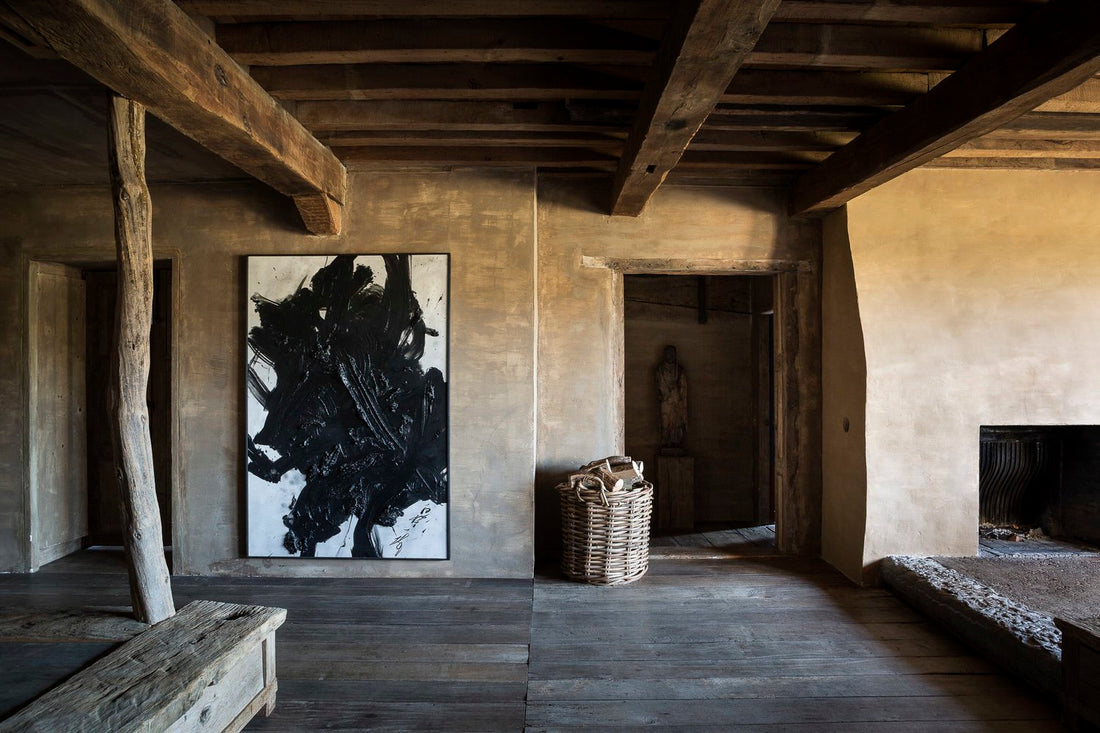
Wabi-Sabi Design: The Beauty of Imperfection and Transience
In a world often dominated by the pursuit of perfection and the ephemeral allure of the new, wabi-sabi design offers a refreshing and profound perspective—one that celebrates the beauty of imperfection, simplicity, and the passage of time. Rooted in ancient Japanese philosophy, wabi-sabi design is a harmonious blend of aesthetics, mindfulness, and a deep connection to the natural world. It invites us to embrace the inherent imperfections and fleeting nature of existence, creating spaces that resonate with authenticity, tranquility, and a sense of profound beauty.
The Essence of Wabi-Sabi: Embracing Imperfection
Wabi-sabi is more than just a design style; it is a philosophy that permeates every aspect of life. Its origins can be traced back to traditional Japanese tea ceremonies, where the appreciation of simplicity, humility, and the transient nature of existence formed the core tenets of the practice. Wabi-sabi is an acknowledgment of the impermanence of all things and a celebration of the inherent beauty that emerges through the passage of time.
In wabi-sabi design, imperfections are not merely tolerated—they are celebrated as integral elements that contribute to the overall character and authenticity of a space. Cracks, weathering, and other signs of age become cherished features that tell a story and reflect the ebb and flow of life.
Simplicity and Minimalism: The Essence of Beauty
At the heart of wabi-sabi design is the concept of simplicity, where less is often more. A clutter-free and unpretentious aesthetic takes center stage, allowing the beauty of natural materials and textures to shine. Spaces are stripped down to their essential elements, evoking a sense of calm and serenity that is both rejuvenating and contemplative.
Natural materials such as wood, stone, and clay are prized in wabi-sabi design for their inherent qualities and unique imperfections. These materials age gracefully, evolving over time and enriching the visual and tactile experience of a space.
The Patina of Time: Transience and Beauty
Wabi-sabi design embraces the concept of transience, highlighting the beauty that emerges as objects and spaces evolve with the passage of time. Just as a weathered piece of furniture carries the history of its use, wabi-sabi interiors capture the essence of a moment, evoking a sense of nostalgia and connection to the past.
In wabi-sabi design, the patina that develops over time is cherished and admired. It adds depth, character, and a sense of authenticity that cannot be replicated through artificial means. The wear and tear of life become a testament to the enduring nature of beauty, even in the face of inevitable change.
Harmony with Nature: Embracing the Organic
Wabi-sabi design is deeply rooted in the appreciation of the natural world. It seeks to mirror the organic processes and patterns found in nature, creating spaces that resonate with harmony and balance. Colors inspired by the changing seasons, textures reminiscent of natural landscapes, and a sense of flow that mirrors the rhythms of the earth all contribute to the wabi-sabi aesthetic.
Indoor plants, bonsai trees, and other natural elements play a vital role in wabi-sabi design, bringing a touch of the outdoors into interior spaces. These living elements remind us of the interconnectedness of all things and create an atmosphere of serenity and mindfulness.
Mindfulness and Contemplation: A Space for Reflection
In a world marked by constant stimulation and noise, wabi-sabi design offers a sanctuary for contemplation and mindfulness. The simplicity of design and the appreciation of imperfection invite us to slow down, savor the moment, and engage with our surroundings on a deeper level.
Wabi-sabi interiors encourage reflection and introspection, allowing us to connect with our inner selves and find solace in the midst of life's chaos. The spaces we inhabit become more than physical environments; they become conduits for a sense of peace and connection to the present moment.
Modern Interpretations: Wabi-Sabi in Contemporary Design
While wabi-sabi design has ancient roots, its principles and aesthetics have found a place in the modern world. In a society that often values perfection and uniformity, wabi-sabi offers a counterbalance—a reminder that beauty can be found in the unrefined and the imperfect.
Contemporary wabi-sabi design often incorporates sleek lines, modern materials, and minimalist arrangements, all while preserving the core principles of imperfection, simplicity, and harmony with nature. The fusion of traditional wisdom with contemporary sensibilities results in interiors that exude a timeless elegance and a sense of serene authenticity.
Conclusion: Finding Beauty in the Unseen
Wabi-sabi design is a journey of discovery—one that invites us to see beyond the surface and embrace the subtle, fleeting moments that make life rich and meaningful. It encourages us to find beauty in the ordinary, the imperfect, and the ephemeral. By creating spaces that reflect the essence of wabi-sabi, we connect with a deeper sense of self, cultivate mindfulness, and uncover the extraordinary in the everyday.
Wabi-sabi design is a reminder that true beauty is not flawless, static, or unchanging. Instead, it is a dynamic and ever-evolving expression of life's intricate tapestry, where imperfection, impermanence, and the raw authenticity of existence come together in a symphony of understated elegance.
